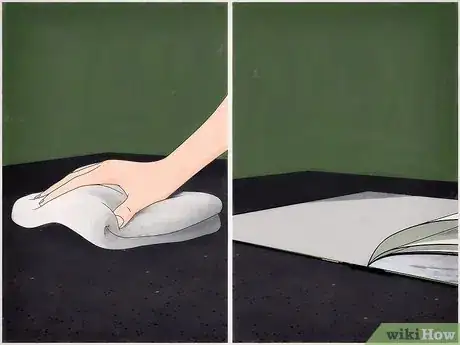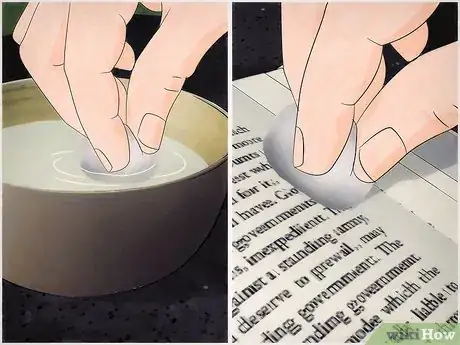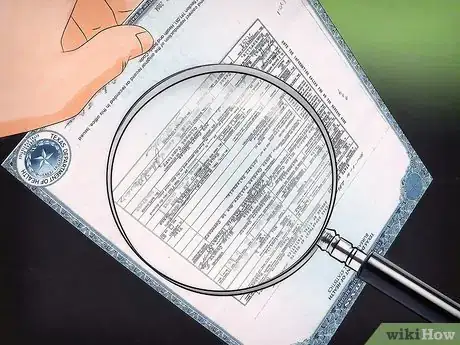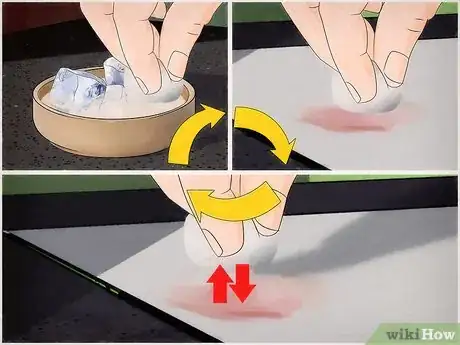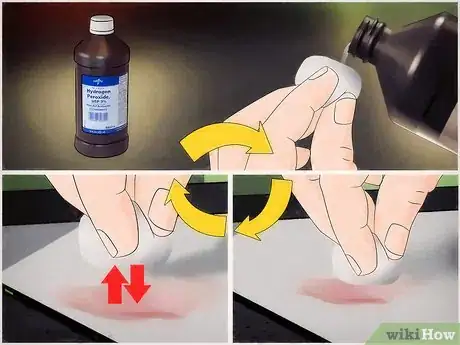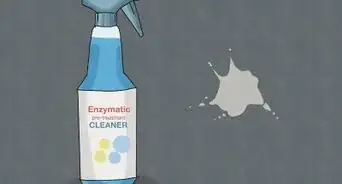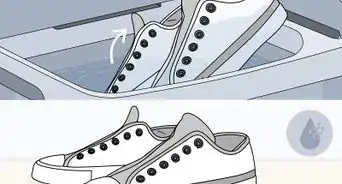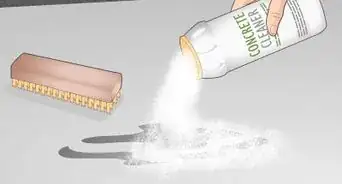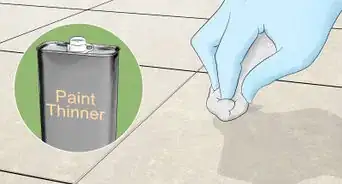wikiHow is a “wiki,” similar to Wikipedia, which means that many of our articles are co-written by multiple authors. To create this article, 11 people, some anonymous, worked to edit and improve it over time.
There are 7 references cited in this article, which can be found at the bottom of the page.
wikiHow marks an article as reader-approved once it receives enough positive feedback. In this case, several readers have written to tell us that this article was helpful to them, earning it our reader-approved status.
This article has been viewed 503,864 times.
Learn more...
You’ve just lifted your coffee mug to find a ring on the page of an expensive textbook. Or maybe you put some important documents on a dirty kitchen counter and now they’re stained with cooking oil. Or perhaps a library book gave you a nasty paper cut and some blood got on the page. Don’t panic! This article will teach you how to remove these stains without further damaging the paper.
Steps
Preparing for Cleanup
-
1Act quickly. This is the most important step for proper stain removal. The faster you begin cleanup, the better your results will be. Stains left alone for a long time begin to "set," becoming harder to remove.[1]
- If a stain has dried and set in a valuable or irreplaceable item, restoration is still possible! However, the methods are fairly complicated and possibly dangerous to the inexperienced. If the methods outlined here are not enough, consult a professional archivist.
-
2Assess the damage. Is your item salvageable? Stain removal is typically reserved for relatively small areas of discoloration. You can clean a splash of tea, but nothing can be realistically done for a paperback soaked by a whole pot.Advertisement
-
3Determine what kind of stain you have. Before you do anything, keep in mind the type of substance on the paper. The type of stain will determine your method of cleanup. This article explains how to take care of the three most common stains:
- Water-based stains: This group is probably the most likely. It includes most types of beverages, including coffee, tea, and soda. These liquids act as a sort of dye, leaving pigment behind as a stain once dried.
- Oil or grease stains: As their name suggests, these are stains caused by oils, such as those used in cooking. These stains are generally more difficult to remove than water based stains, as grease leaves behind oily clear spots in paper.
- Blood stains: Whether from a paper cut or a nose bleed, blood can often find its way onto a book. While blood is technically water based, special consideration during cleanup must be made to prevent a permanent yellow stain.[2]
Removing Water-Based Stains
-
1Mop up as much of the staining liquid as you can with a dry, folded paper towel. If the towel soaks through, use a fresh one to mop up the rest. Careful dabbing will minimize the size of the stain by not spreading the liquid around.[3] Press lightly up and down with care so as to not damage the paper.
-
2Wipe down and dry a waterproof surface and spread the page onto it. Be absolutely sure your work area is clean or you will have a second stain to remove! Hold the paper down at two or more corners with clean, waterproof objects. This step is to minimize the possibility of wrinkling the page.
-
3Moisten a clean paper towel and once again carefully dab the stain. Repeat this with fresh paper towels until you stop seeing color come off onto the towel. [4] With water based stains that haven’t been left to dry, most pigment will be removed using just this method. If your stain persists, move on to the next step.[5]
-
4Prepare a dilute vinegar solution. In a bowl, mix a half cup of white vinegar with half a cup of water. Most other types of vinegar will themselves stain paper, so be sure the vinegar you use is completely clear. This step should be done away from the paper to avoid spills and further damage.
-
5Moisten a cotton ball with the solution and carefully dab a small word on the document. Check to see if any ink has come off onto the cotton ball. Some printing methods produce ink that will not run, but others will. In case it does, be sure to select the smallest, least conspicuous part of the paper to test.
- If ink has come off of the document, further attempts at removing the stain may ruin your paper.[6]
- If the cotton ball is clear, proceed to the next step.
-
6Dab the cotton ball on the stain. Any remaining pigment should be dissolved by the vinegar and be lifted from the page.[7] If the stain was large or dark, you may have to repeat this step with a fresh soaked cotton ball as the first becomes dirty. Using fresh cotton balls ensures you don't inadvertently spread the stain across the page.
-
7Dab the area where the stain once was with a dry paper towel. Allow the paper to air dry. If the item you just cleaned was the page of a book, leave the book open to that page. Use weights to hold down paper towels on the pages on either side of the freshly cleaned page.
Cleaning Oil Stains
-
1Soak up any excess oil with a paper towel. As with water-based stains, do this as quickly as possible. Oil stains generally don't set in the same way that water-based stains do, but they can still spread quickly. Wash your hands before moving to the next step to make sure they are free of oil.
-
2Fold a paper towel so that it is at least two sheets thick and wider than the stain. Place the towel on a clean, hard surface. Make sure to pick a surface that won't be damaged by the oil just in case it soaks through the paper. The best places for this are the kitchen counter, a glass table, or a metal workbench. Avoid wood furniture.
-
3Place the paper on top of the paper towel. Make sure that the stain is over the paper towel. It is best to center the stain so that there is roughly an inch of paper towel also covering the clean part of the page on all sides. The extra space is there in case the stain spreads a little over time.
-
4Fold a second paper towel and place it over the stain. As with the first paper towel, make sure it is at least two sheets thick. Again, make sure the paper towel is around one inch wider than the stain on all sides. This is especially important to avoid getting oil on the object in the next step.
-
5Put a heavy book on top of the second paper towel. The best books to use are hardcover textbooks and dictionaries. Any flat, heavy object may be used instead of a book. If the stain was inside of a book, close the book with the paper towels inside and place a second book on top.
-
6Remove the book after a few days. The stain may be completely removed at this point. If the stain is still visible, try replacing the paper towels and put the book back on the paper for another night. If any oil still remains, proceed to the next step.
-
7Place enough baking soda onto the paper so that it completely covers the stain and leave overnight. The baking soda should be in a relatively tall pile. If you can still see the paper through the baking soda, add more! Other non-staining absorbent powders will also work for this step.
-
8Remove the baking soda and check the stain. Repeat Steps 7-8 with fresh baking soda until the stain is completely gone.[8] If after a few tries the stain is still visible, you may need to take your paper to a professional restorer. However, keep in mind their services will most likely be expensive.
Erasing Blood Stains
-
1Soak up as much blood as possible with a clean, dry cotton ball or a paper towel. If the stain is not your own blood, exercise caution and use gloves for this and all subsequent steps. Some bloodborne pathogens can remain infectious for days outside the body. Dispose of all soiled cleaning supplies with care.
-
2Moisten a cotton ball with cold water and carefully dab at the stain just enough to wet the area. If possible, chill the water in a bowl with ice cubes. Never use warm or hot water to clean blood! If you do, the heat may set the stain and make it permanent.[9]
-
3Mop up the moistened stain with a dry cotton ball. Carefully dab the area until dry. Tamp gently up and down. Do not dab at a dry stain, as that may damage the paper.
-
4Repeat Steps 2-3 until blood fails to come off the paper onto the cotton ball. This will likely need to be done a few times. If the stain was fresh, this may be all that's necessary to remove the stain. If the stain persists, go on to the next step.
-
5Buy 3% hydrogen peroxide solution. Repeat steps 2-3 using hydrogen peroxide instead of water. Repeat as necessary. Do not be tempted to use bleach on a blood stain! Bleach can break down the proteins found in blood, leaving behind an unsightly yellow mark.[10]
Community Q&A
-
QuestionHow do you disinfect paper?
 Community AnswerYou can mist it with a disinfectant spray and let it dry.
Community AnswerYou can mist it with a disinfectant spray and let it dry. -
QuestionHow can I get rid of a baby's urine stains on a paper?
 Community AnswerWet the paper, then let it sit in the sun for four to six hours. If that didn't work, let it sit longer in the sun.
Community AnswerWet the paper, then let it sit in the sun for four to six hours. If that didn't work, let it sit longer in the sun. -
QuestionIs there a way other than water-based stain remover to get mucus off?
 Community AnswerIt depends on whether the stain has dried or not. If it is dry, very carefully dab water onto the paper and slowly peel it off. If it is still wet, use tweezers or a spoon to take it off, then place the paper on or under a surface giving cold air. Warm or hot air can cause the paper to tear or wrinkle.
Community AnswerIt depends on whether the stain has dried or not. If it is dry, very carefully dab water onto the paper and slowly peel it off. If it is still wet, use tweezers or a spoon to take it off, then place the paper on or under a surface giving cold air. Warm or hot air can cause the paper to tear or wrinkle.
References
- ↑ http://emptyeasel.com/2014/10/20/how-to-remove-stains-from-watercolor-or-drawing-paper/
- ↑ http://www.si.edu/mci/english/learn_more/taking_care/stains.html
- ↑ http://emptyeasel.com/2014/10/20/how-to-remove-stains-from-watercolor-or-drawing-paper/
- ↑ http://emptyeasel.com/2014/10/20/how-to-remove-stains-from-watercolor-or-drawing-paper/
- ↑ https://books.google.com/books?id=p_TSTd444VYC&lpg=PA171&ots=mFwBo48fq
- ↑ https://books.google.com/books?id=p_TSTd444VYC&lpg=PA171&ots=mFwBo48fq
- ↑ https://books.google.com/books?id=p_TSTd444VYC&lpg=PA171&ots=mFwBo48fq
- ↑ http://www.howtocleanstuff.net/how-to-remove-an-oil-stain-from-paper/
- ↑ http://archivesoutside.records.nsw.gov.au/conservation-tip-no-3-removing-blood-from-paper-documents
About This Article
To remove water-based stains from paper, start by mopping up as much of the liquid as possible by dabbing it with a dry, folded paper towel. Once the liquid is absorbed, spread the page onto a clean, dry surface and hold the corners down with a paperweight or rock. Then, moisten a clean paper towel and dab at the stain to lift the discoloration. If the stain persists, mix ½ cup vinegar with ½ cup water, dip a cotton ball into the solution, and gently blot the stain. To learn how to clean oil stains off paper, keep reading!




